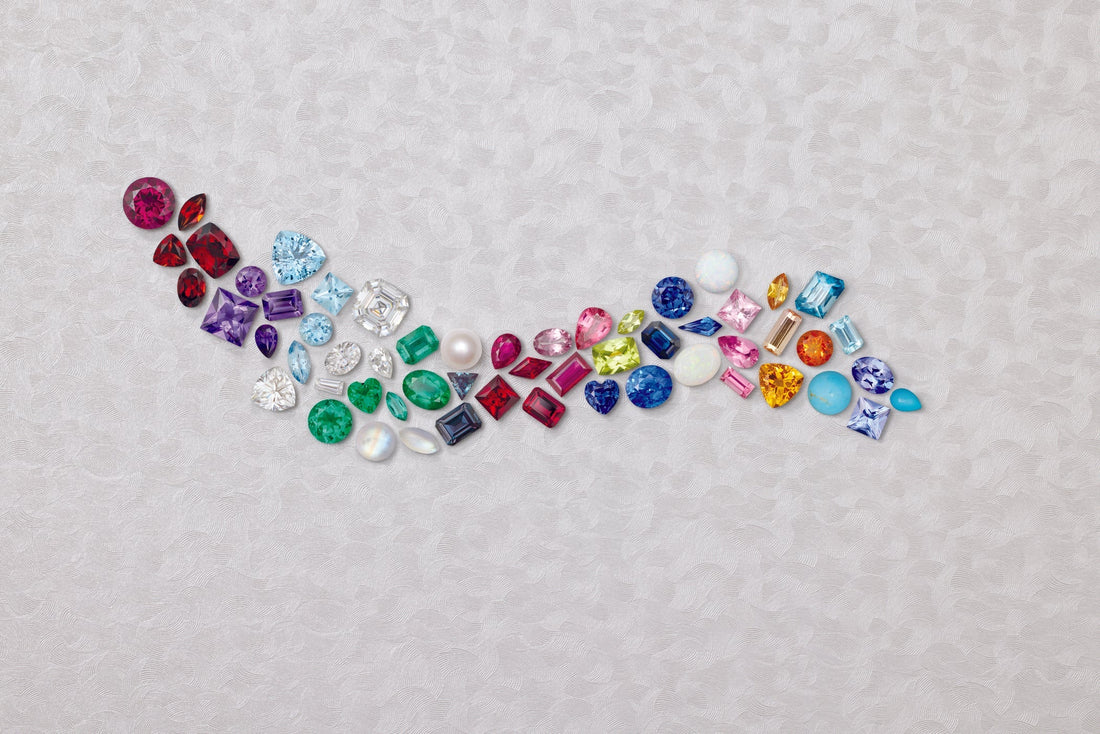
The Timeless Elegance of Sapphire Gemstones
Share
Sapphire gemstones have captured the hearts of humans for centuries with their mesmerizing beauty and deep symbolism. Known for their vivid blue hues, these gemstones have adorned the crowns of royalty, found their place in cherished jewelry, and even inspired legends and myths. In this blog, we will explore the world of sapphire gemstones, delving into their history, characteristics, symbolism, and contemporary uses.
A Rich History
Sapphires have a rich and storied history that spans thousands of years. The word "sapphire" is derived from the Greek word "sappheiros," which originally referred to lapis lazuli, a deep blue stone. Ancient civilizations believed sapphires had protective qualities, making them a popular choice for jewelry worn by royalty and priests.
One of the most famous historical sapphires is the "Star of India," a nearly 563-carat blue sapphire that currently resides in the American Museum of Natural History. This gemstone is renowned for its size and remarkable star-like asterism, a phenomenon where a star-shaped light pattern appears on the surface when viewed under certain lighting conditions.
Sapphires also have a strong connection to royalty. In fact, blue sapphires have been the gemstone of choice for engagement rings throughout history. Perhaps the most famous example is Princess Diana's engagement ring, which now graces the hand of Kate Middleton, the Duchess of Cambridge. This iconic ring features a stunning 12-carat sapphire surrounded by diamonds.
Diverse Colors and Varieties
While sapphires are commonly associated with the classic blue hue, they come in a wide range of colors. These different color varieties are often referred to as "fancy sapphires." Some of the most sought-after fancy sapphire colors include pink, yellow, green, orange, and even purple. Each of these colors has its unique charm and allure, making sapphires a versatile choice for jewelry.
The presence of trace elements in the gem's crystal structure is responsible for the variety of colors sapphires can exhibit. For example, the presence of chromium results in the striking red hue of a ruby, while iron and titanium contribute to the blue color of sapphires.
One particularly intriguing variety of sapphire is the padparadscha sapphire. These gemstones display a delicate blend of pink and orange hues, reminiscent of a tropical sunset. The name "padparadscha" is derived from the Sinhalese word for "lotus flower," signifying its rarity and uniqueness.
Symbolism and Spiritual Significance
Throughout history and across cultures, sapphires have been associated with a multitude of symbolic meanings and spiritual significance. They are often linked to qualities such as wisdom, loyalty, and nobility. In many traditions, sapphires are believed to protect their wearers from harm and promote inner peace.
In ancient Persia, sapphires were seen as a symbol of the heavens, and wearing them was thought to bring heavenly blessings. Similarly, in medieval Europe, sapphires were believed to have the power to guard against envy and protect against poisoning.
In modern times, sapphires are also associated with notions of truth, sincerity, and faithfulness, making them a popular choice for engagement rings. Couples choose sapphire engagement rings not only for their aesthetic appeal but also for the meaningful symbolism they carry.
Contemporary Uses
Sapphires continue to be highly prized in the world of jewelry, thanks to their timeless beauty and durability. Their hardness, ranking at 9 on the Mohs scale, makes them an excellent choice for everyday wear, ensuring that sapphire jewelry can withstand the test of time.
One of the most popular contemporary uses of sapphires is in engagement rings and wedding bands. Couples seeking a unique and meaningful alternative to traditional diamond rings often opt for sapphires, drawn to their vibrant colors and the symbolism they represent.
In addition to traditional jewelry, sapphires are also used in modern jewelry designs to create stunning pieces that blend classic elegance with contemporary flair. From sapphire earrings and necklaces to bracelets and brooches, there are endless possibilities for incorporating these gemstones into jewelry collections.
Sapphires are not limited to jewelry, however. They are also used in various technological applications, including the manufacturing of high-quality watch crystals and the production of lasers. The exceptional hardness and optical properties of sapphires make them indispensable in these fields.
Ethical Considerations
As with many precious gemstones, the mining of sapphires has raised ethical concerns related to labor practices, environmental impact, and community well-being. It's essential to consider the ethical and sustainable sourcing of sapphires when purchasing them.
One positive development in recent years has been the emergence of fair-trade and ethically sourced sapphires. These gemstones are mined under conditions that prioritize the welfare of workers and the preservation of the environment.
Conclusion
Sapphires have an enduring allure that transcends time and trends. Their captivating colors, rich history, and profound symbolism make them a cherished choice for jewelry and other applications. Whether you're seeking a timeless engagement ring or a piece of jewelry that carries a deeper meaning, sapphires are a gemstone that continues to shine bright in the world of fine jewelry. As you explore the world of sapphires, you'll discover a gemstone that embodies elegance, significance, and the beauty of nature's creation.
